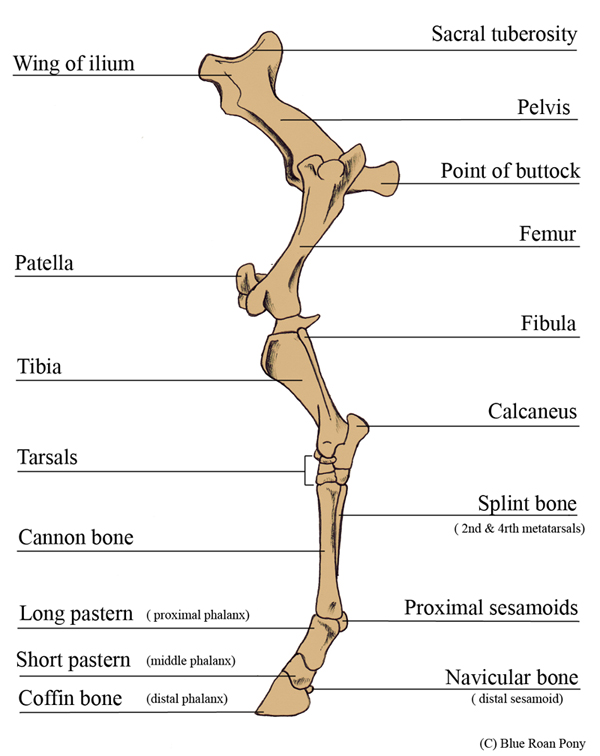
Forever Horses Anatomy of the Equine Hindleg
This module of vet-Anatomy presents 135 labeled anatomical illustrations of the osteology of the horse, specially illustrated and selected for veterinary students and equine veterinarians.

Articulated Horse Skeleton Bone Clones, Inc. Osteological Reproductions Skeleton anatomy
Learn about the structure and function of your horse's powerful hind limbs with Dr. Roberta Dwyer of the University of Kentucky's Gluck Equine Research Center.
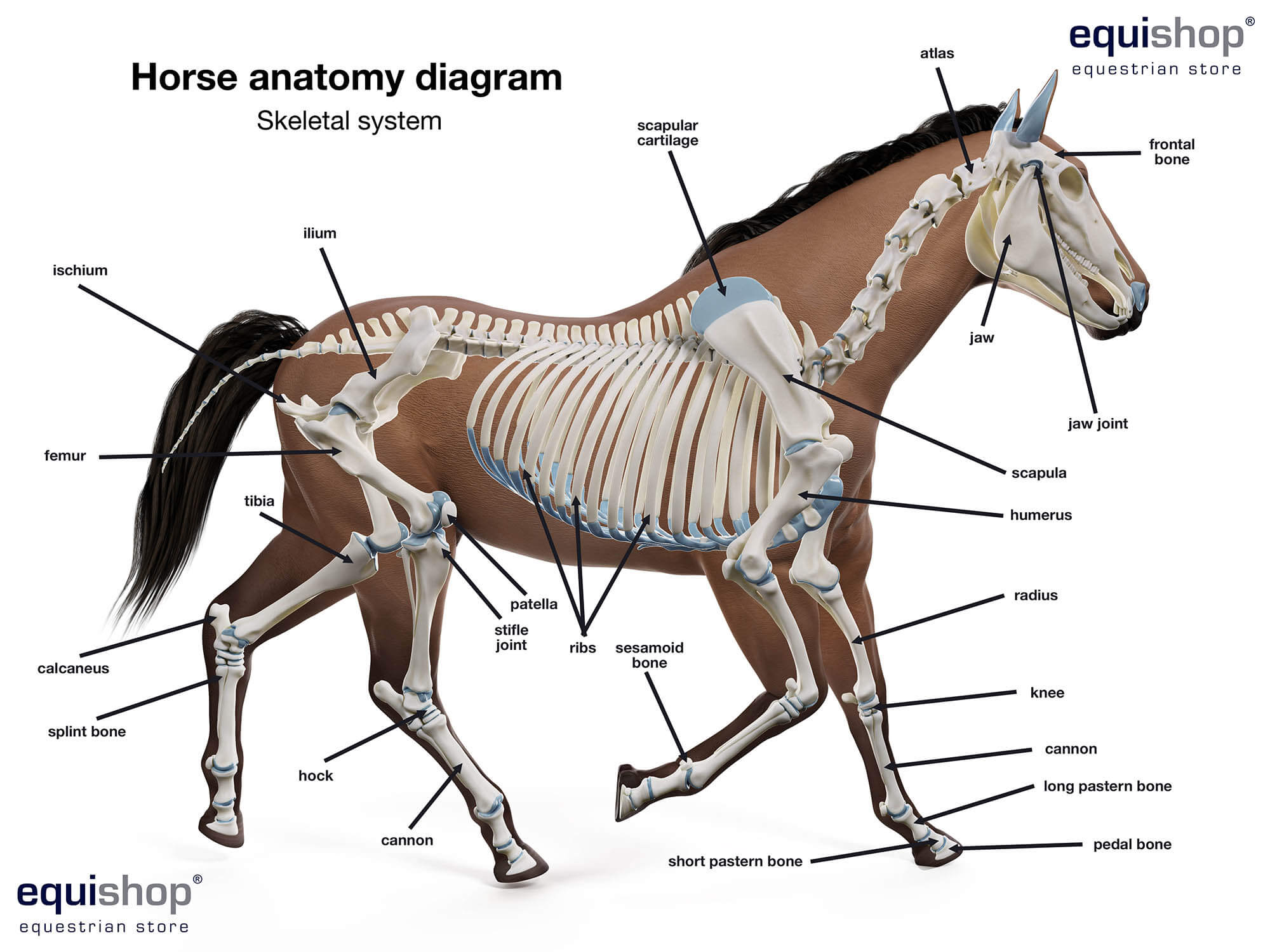
Horse anatomy diagrams of horse body parts Equestrian Shop
Rear limb anatomy Horses are odd-toed ungulates, or members of the order Perissodactyla. This order also includes the extant species of rhinos and tapirs, and many extinct families and species. Members of this order walk on either one toe (like horses) or three toes (like rhinos and tapirs). [1]

Vitals & Anatomy Horse Side Vet Guide Horse anatomy, Anatomy, Horse care
The pedal bone, also known as the coffin bone or P3, is the main bone in the foot. The navicular bone is a small bone located behind the pedal bone. The navicular bone functions as a pully for the deep flexor tendon that wraps around the navicular and is attached to the pedal bone. The horse's hind limbs

Image result for horse hind leg bones Anatomy reference, Animal drawings, Anatomy drawing
What Are The Different Parts of A Horse's Leg? Horse Leg Anatomy - Upper Hind Legs #1 - The pelvis #2 - The Femur #3 - The Stifle #4 - The Fibula and Tibia #5 - The Hock Horse Leg Anatomy - Upper Forelegs #1 - Scapular #2 - The Humerus #3 - The Elbow #4 - The Radius and Ulna #5 - The Knee Horse Leg Anatomy - Lower Legs #1 - The Cannon Bone
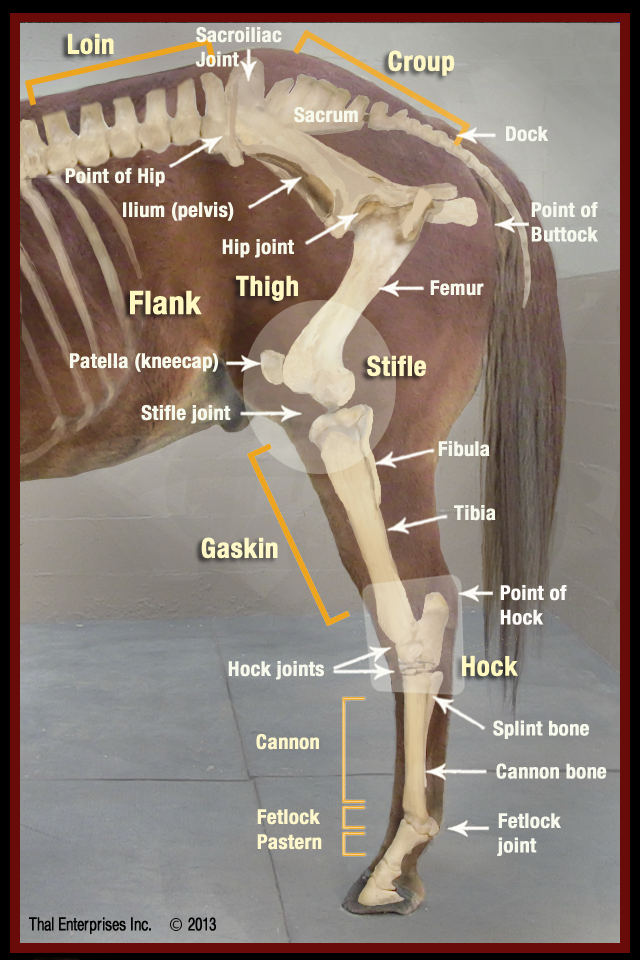
Lameness & The Lameness Exam What Horse Owners Should Know
Ligaments of the upper body include: Nuchal and supraspinous ligaments: the nuchal ligament attaches to the dorsal surface of the cervical vertebrae. Its dorsal section extends from the occipital protuberance of the skull (the poll) to the withers, then narrows to become the supraspinous ligament.
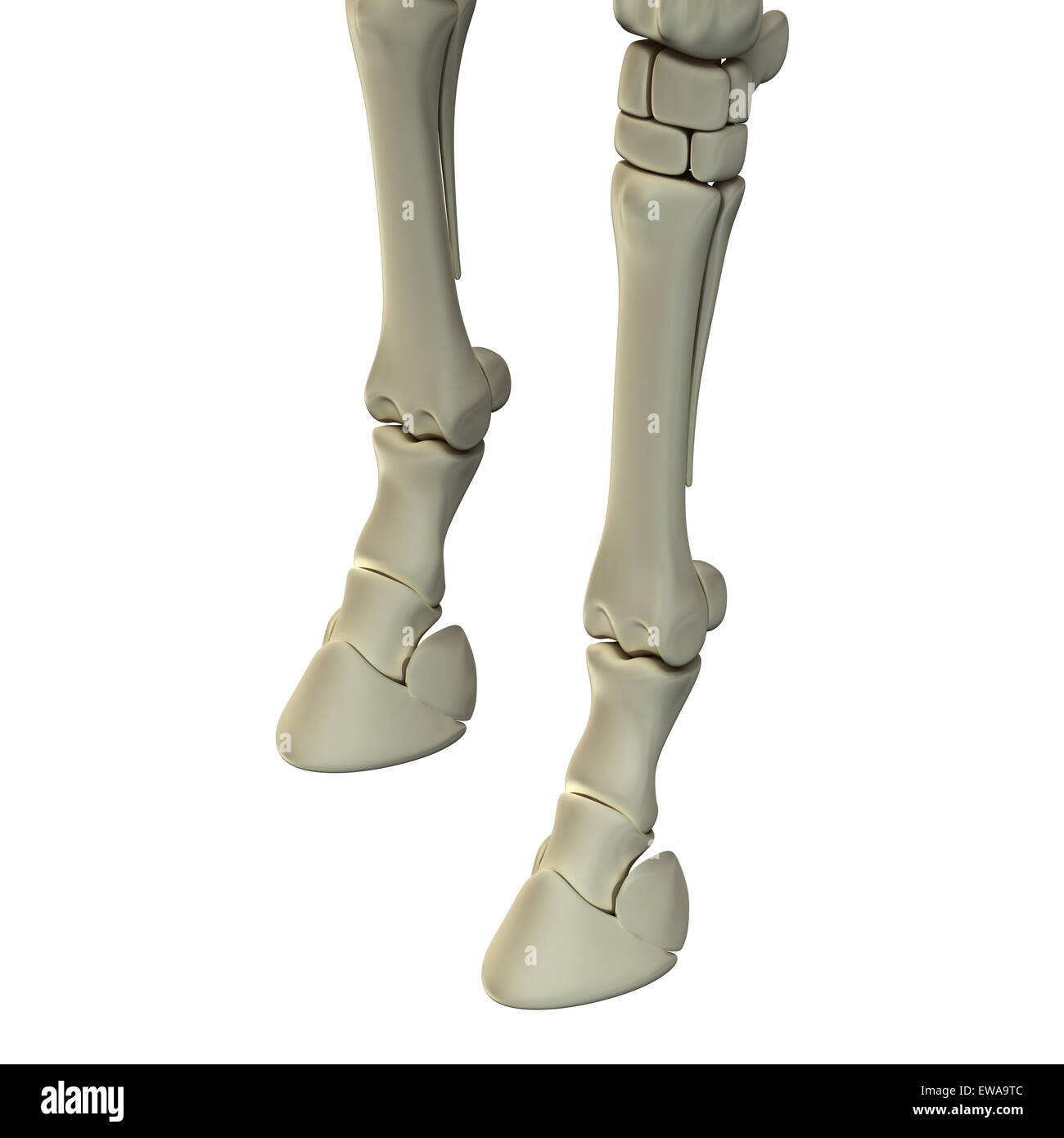
Horse Front Leg Bones
Horse anatomy leg bones. Following are the important osteological features from the horse anatomy leg bones. #1. Gluteal lines are not prominent in horse hip bone #2. The ventral tubercle is absent in horse hip #3. The ischial tuberosity is not trifid as like the cow #4.

Skeletal horse leg Equine distal limb anatomy Pinterest Anatomía, Antibioticos y Animales
Because a horse's legs are made up of a finely tuned system of bones and joints, ligaments and tendons, muscles and connective tissue designed to carry a relatively heavy body, good body conformation combined with healthy limbs is extremely important for proper function. If there are problems with the horse's leg, in about 60% of cases the.
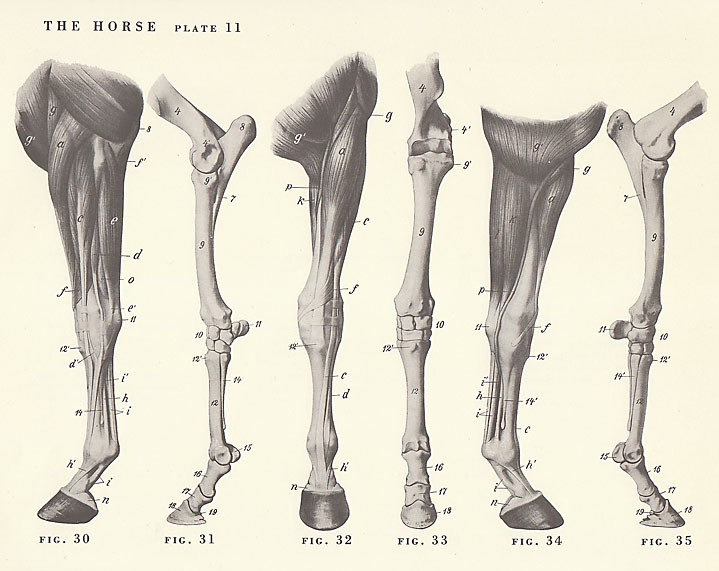
Horse Leg Bones Diagram horse skeleton diagram horse leg diagram image search The legs
The horse skeleton consists of 200 different bones in the head, body, and legs. On the inside, every horse has the same horse parts, from the bone structure to the ligaments and horse muscles. But the size and look of the outer system can vary by equine race and gender. Horse Head A horse's head can weigh up to 16 kg (large horse).
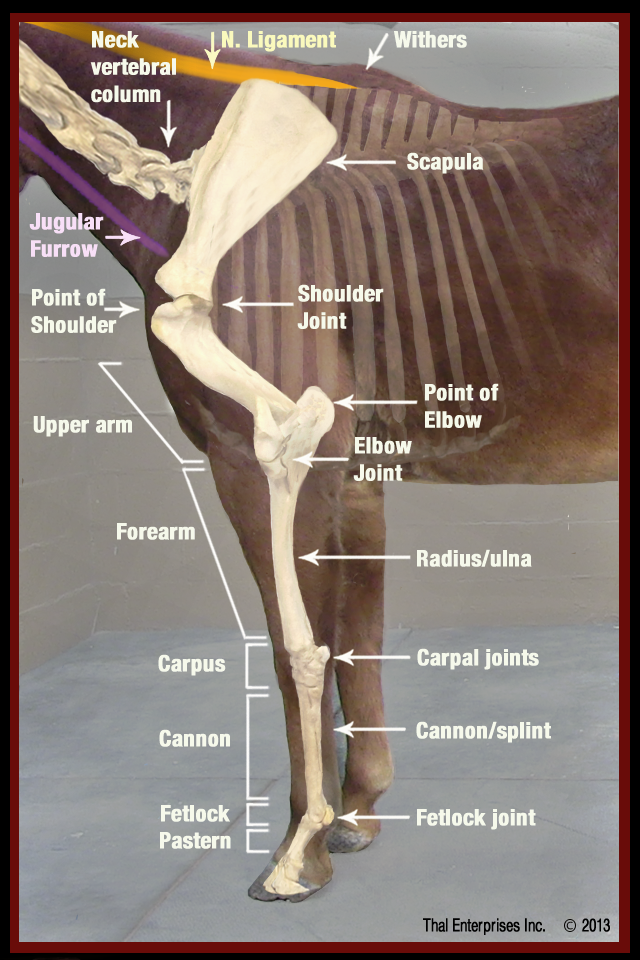
Horse Anatomy Front Leg Anatomical Charts & Posters
Horse Anatomy Horses have, on average, a skeleton of 205 bones. A significant difference in the bones contained in the horse skeleton, as compared to that of a human, is the lack of a collarbone. Their front limb system is attached to the spinal column by a powerful set of muscles, tendons and ligaments that attach the shoulder blade to the torso.
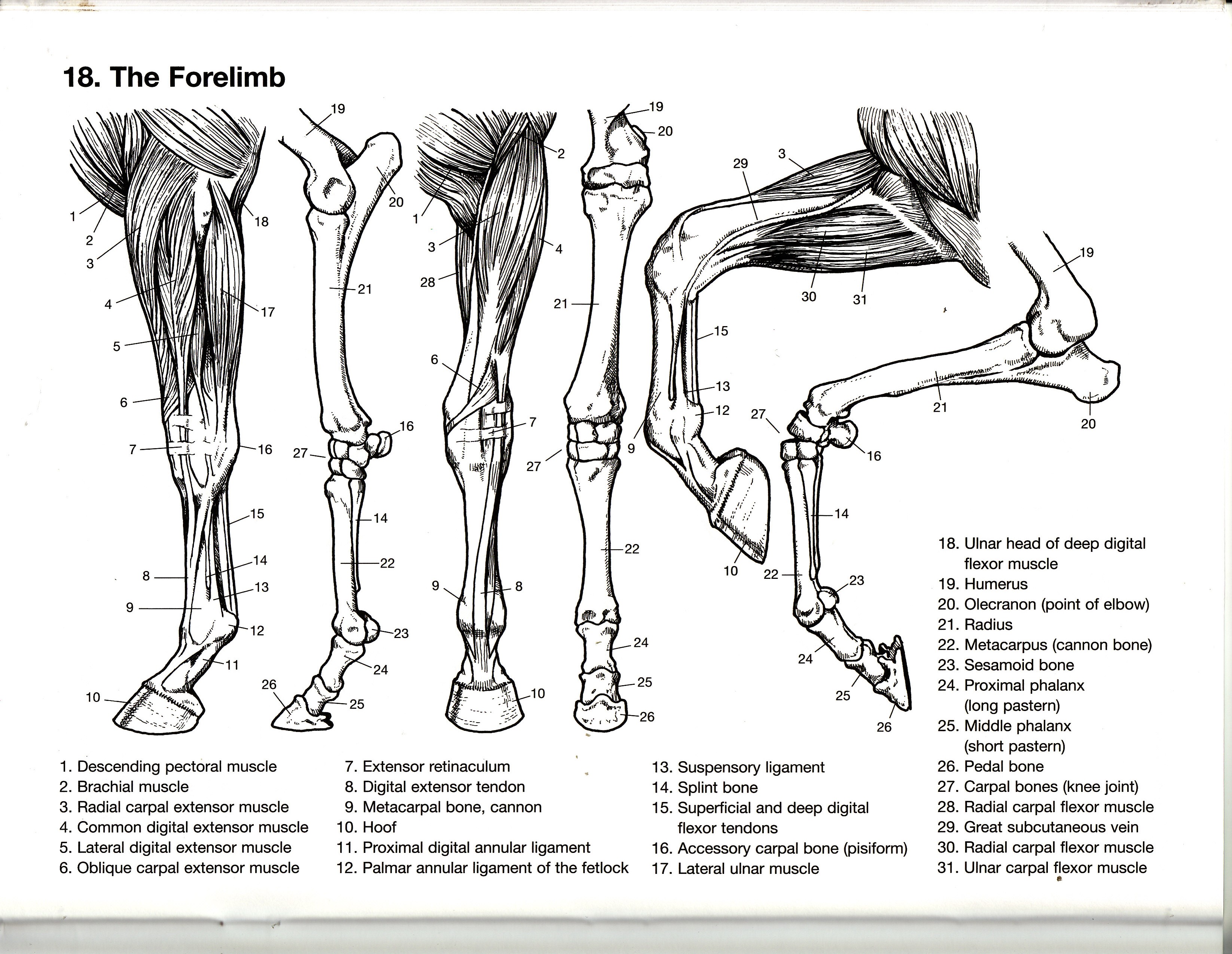
All sizes The Forelimb Flickr Photo Sharing!
Parts of a horse on both the back and front legs. 32. Cannon bone and splint bone. The cannon bone is the large metacarpal below the knee (front) or the hock (back), and the splint bone is the small, bony pencil-like structure behind the cannon bone. These bones resemble the bones in our hands.

Horse Skeleton Horse anatomy, Horses, Pelvis anatomy
Types of posture of horse's back legs Horse pastern - faults, anomalies, ailments. Another important part of a horse's leg is the cannon bone. Its faults cause weakening of the limb. Forms of faults in the pastern of a horse: Pastern is too straight. Calf-kneed (short, straight pastern). Buck-kneed. Pastern with thin hock.
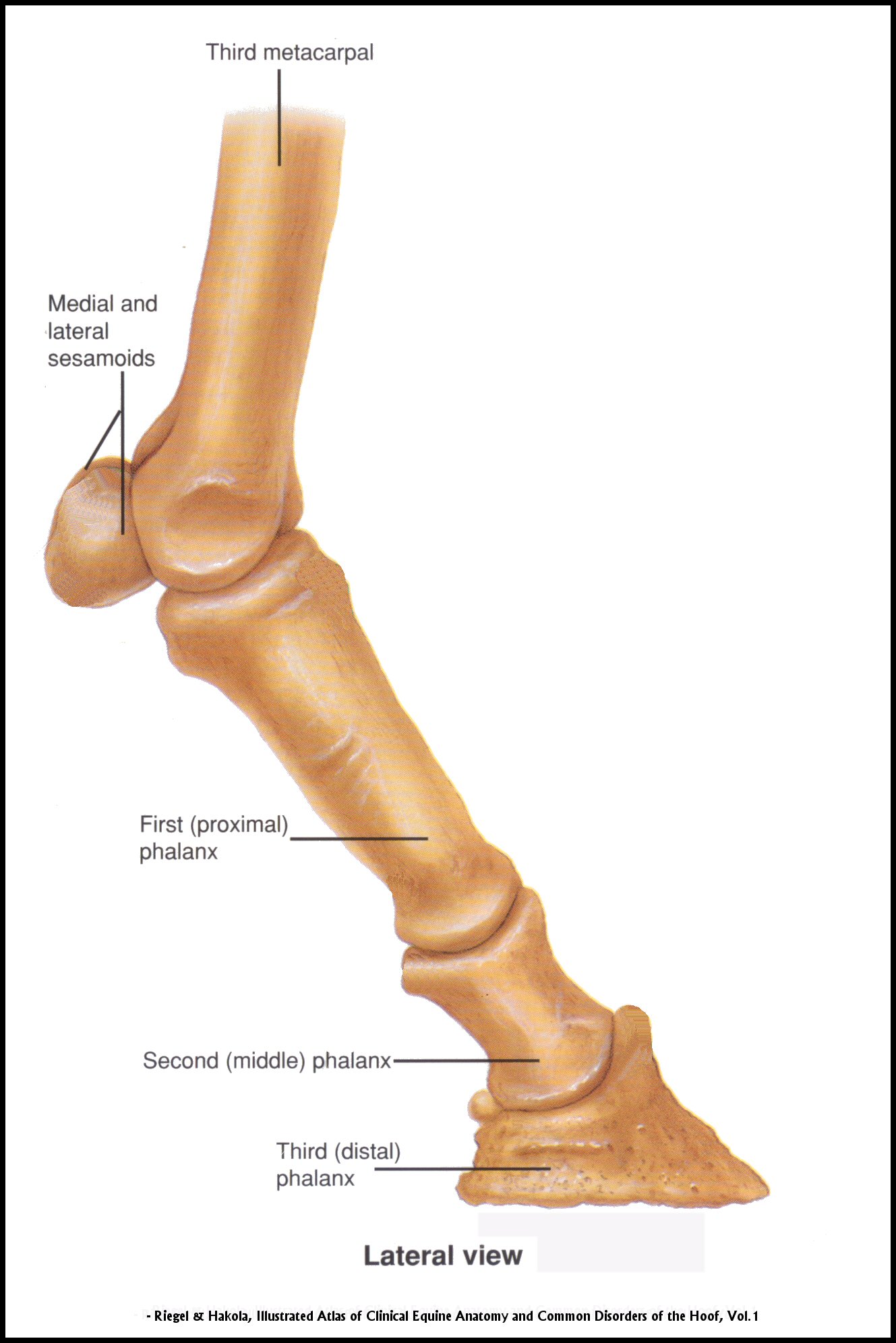
Hoof Angles Part 3 — Enlightened Equine
External anatomy Back: the area where the saddle sits, beginning at the end of the withers, extending to the last thoracic vertebrae (colloquially includes the loin or "coupling", though technically incorrect usage) Barrel: the body of the horse, [1] [2] enclosing the rib cage and the major internal organs
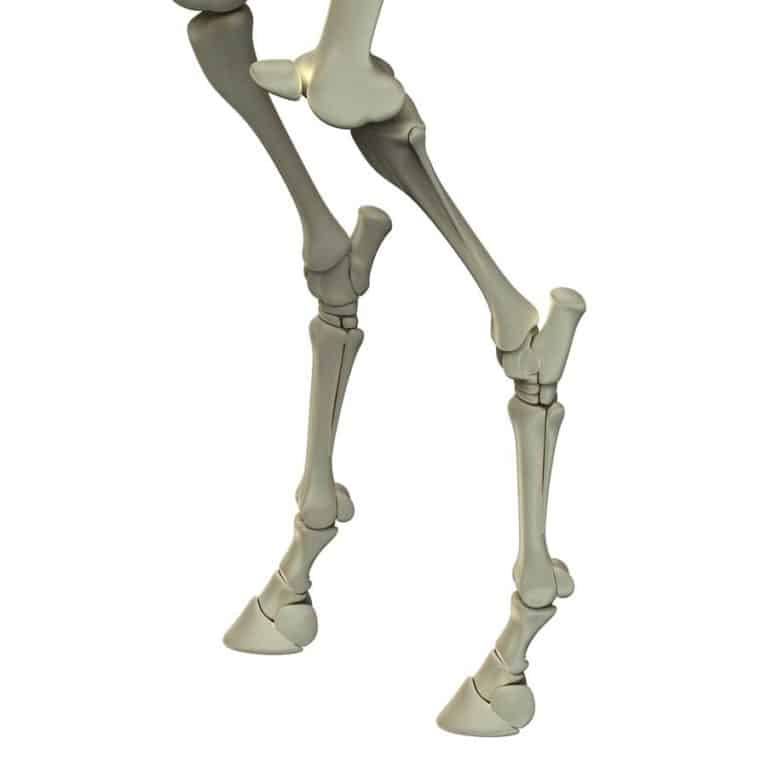
Joint health problems, prevention and supplementation Horse and Rider
Colour and pattern horse: colours Common horse colours: dappled gray (top left), dun (centre left), brown (bottom left), strawberry roan (top centre), chestnut (centre), skewbald (a type of pinto, bottom centre), palomino (top right), bay (centre right), black (bottom right). (more)

Horse Life and Love All About The Skeleton and Bones
What Is The Correct Angle Of The Hoof? 70 degrees 40 degrees 45 degrees 50-54 degrees 52-58 degrees Angle of the Hoof Angle of the Hoof - Extremely Important! Angle of the Hoof - Extremely Important! Lameness or Unsoundness An abnormality in a horse's movement caused by pain or reduced range of motion.
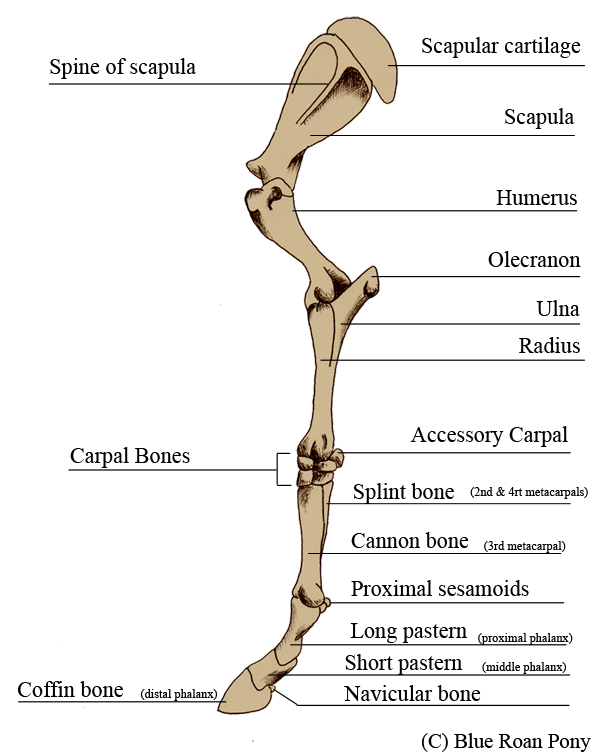
Forever Horses Anatomy of the Equine Forleg
The anatomy of a horse's leg is a fascinating and complex system that allows these majestic creatures to move with power and grace. Understanding the structure of the forelimb and hindlimb bones is essential for anyone involved in the care and management of horses. Forelimb Bones.